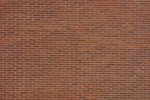
Discovering a wasp’s nest around the home induces fear in many people. Some species of wasps are aggressive in defense of their nests, while others pose little threat to people. Learning to recognize a wasp species by observing a nest will let you know if you're living in the proximity of a swarming or docile species.
Paper Wasps
Among the most common varieties of wasps that build nests around homes are paper wasps. Paper wasps build their nests in places where they feel safe, like under the eaves of your house or in a barn or attic space. Paper wasps are so called because of the papery material they build their nests from. Paper wasps' nests have small, open cells that resemble round honeycombs. They are gray in color and look like paper mache. These nests are generally smaller than the size of your hand. They are social wasps, but they aren’t very aggressive.
Yellow Jackets
Yellow jackets resemble small, bright-yellow honey bees. Their habit of building their nests in burrows in the ground has earned them the nickname ground bees. Yellow jacket nests can be hard to spot, since they build them in underground burrows or inside wall cavities. They are gray in color and look like paper mache. Unlike paper wasps, yellow jackets enclose their nests. Inside the roughly spherical nest there are layers of cells accessed by one exterior entrance. Nest populations number in the thousands. Yellow jackets are extremely aggressive in defense of their nests and unlike the bees they resemble, they can sting multiple times without dying. Due to their aggressive nature, it’s best to call a professional to remove a yellow jacket nest.
Hornets
Hornets look similar to yellow jackets, but are larger in size and sometimes have white instead of yellow stripes. Their nests have the same papery appearance, but hornets' nests are in a roughly spherical shape. They can be about the size of a football, larger ones the size of a basketball. Hornet nests are typically found inside attics and wall cavities or inside bushes or trees. While not quite as aggressive as yellow jackets, hornets are very protective of their nests. If you spot a hornet’s nest in or around your home, call a professional to remove it.
Dirt Daubers
Dirt daubers may look intimidating due to their large size and strange appearance. Dirt daubers, sometimes called mud daubers, are yellow-and-black or all-black in coloration. They have a thin, almost alien appearance. They are not aggressive to humans and won’t defend their nests. Unlike other species of wasps, dirt daubers are solitary. Their nests are easily identified because they look like muddy cylinders lined up in rows, typically found under eaves on your house. They rarely sting -- only if handled -- so it’s safe to remove their nests yourself. However, you may want to have them around since they love to eat spiders, in particular black widows.
References
Photo Credits
-
Photodisc/Photodisc/Getty Images



